
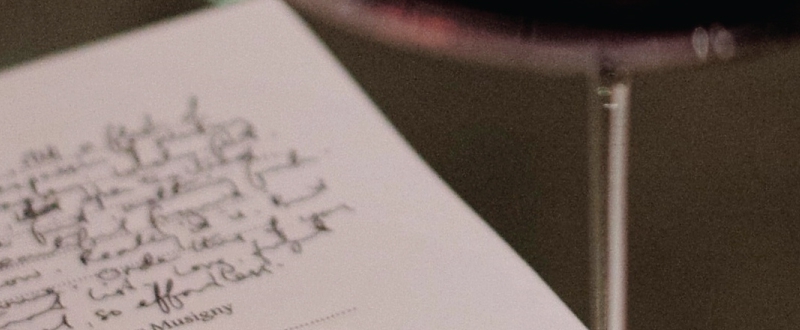
© Alexandria Rae Cubbage, 28th November 2019

At the end of October, we conducted a tasting session about Grower Champagne to learn more about this hot topic in wine and why this category is continuing to increase in popularity. Grower Champagne refers to Champagnes produced by the people that grow the grapes on their estate. In French the term is ‘Récoltant-Manipulant’, so in general on Champagne labels, look for ‘RM’ on the label to identify a grower Champagne.
The main reasons why we like Grower Champagne are the following:
We found these qualities to be true in the Champagnes we tasted throughout this evening. Here was our lineup and our impressions:
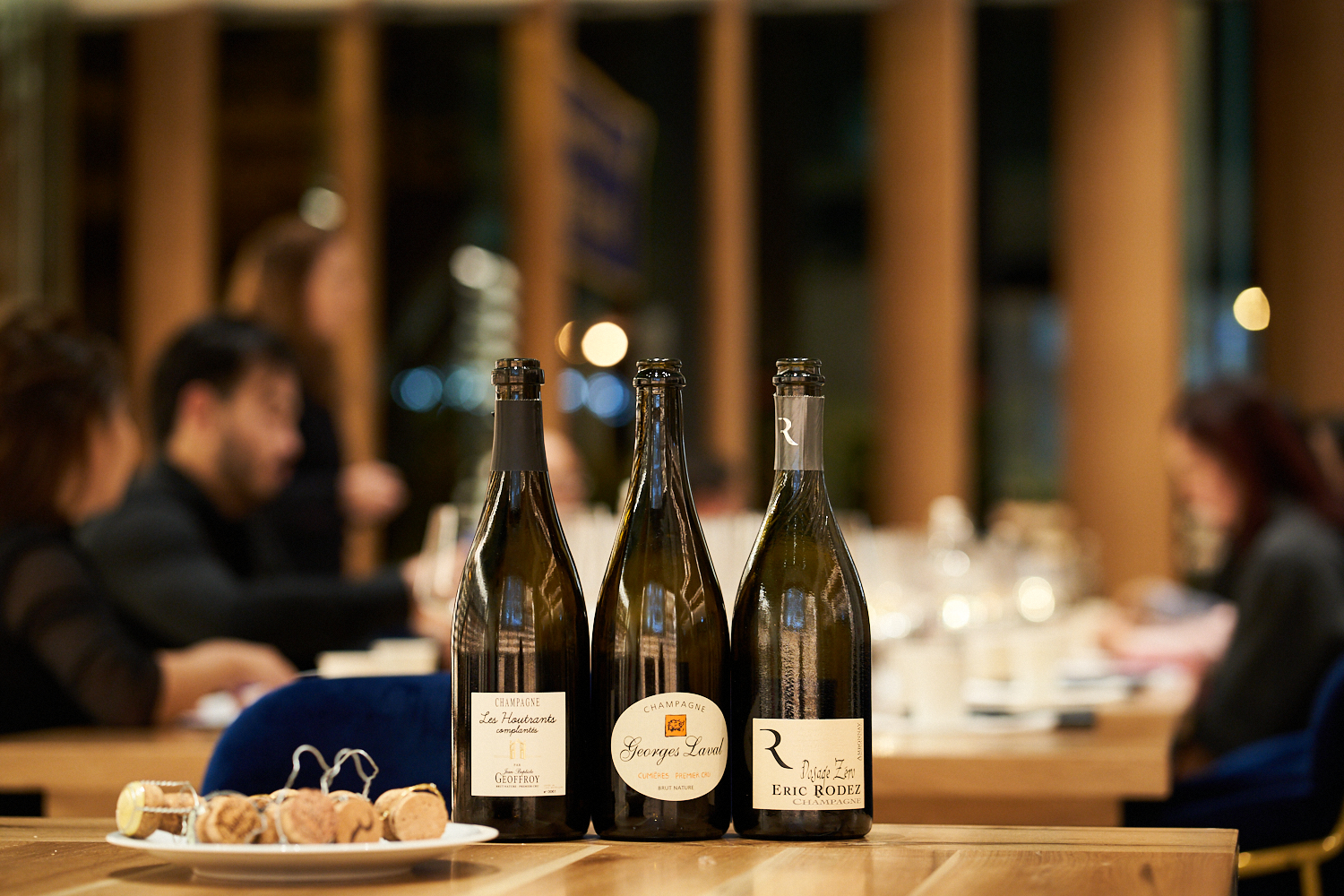
Montagne de Reims
Disgorged July 2018
Blend: 70% Pinot Noir, 30% Chardonnay; vinified 80% in small oak barrels and 30% reserve wine used
Eric Rodez thinks of his Champagnes like a musical composition. He makes eight different Champagnes which he sees as eight melodies. His vineyards comprise 6.5 hectares located on the mid-slopes of Ambonnay. These vineyards are made up of 35 parcels which Eric considers to be 35 notes of music that express five emotions: grape variety, vintage, vineyard location, method of fermentation and malolactic fermentation (‘forte’) or not (‘allegro’). Tyson Stelzer, The Champagne Guide 2018-2019 pg. 145. In addition, for his winemaking approach, he vinifies in barriques, uses light dosage(no more than 5g/l) and has reserve wines spanning twenty years. pg. 145. Rodez’s wines are known for having a “salty minerality”. Pg. 145.
This wine showed lively fruit notes of golden delicious apple and ripe pear combined with lemony acidity and a minerally backbone. It was dry with medium plus body, creamy texture and a long length. The wine received two votes for top two favourite wines of the night.
Vallée de la Marne
Disgorged 4 July 2019
Fruit is from 2017 Vintage
Blend: 50% Chardonnay, 25% Pinot Noir, 25% Pinot Meunier
This Grower Champagne has quite small holdings with only 2.5 hectares. They produce approximately 15,000 bottles per year. Based in Cumières in Vallée de la Marne, they are one of the oldest winemaking families (since 1694) in Champagne. Georges Laval has farmed his vineyards organically since 1971, and he makes the wine in a natural and artisanal way. His son, Vincent, who took over in 1996 follows this same approach and farms and works in this way in order to preserve the original aromas and flavours of the great terroirs of Champagne. For winemaking, Vincent uses indigenous yeast, ferments in oak barrels, and uses very little sulphur, and there is no fining or filtration. The Cumières 1er Cru Brut Nature spends three years in barrel before disgorgement.
We decanted this wine an hour prior to serving it as when we opened it this Champagne was very closed. This wine showed aromas that reminded me of Chablis with flavours of oyster shell, wet rocks, crunchy green apple and lime citrus. The wine was medium plus in body and bone dry. We all agreed that this Champagne is a serious one with intense precision that is meant for food and contemplation; it’s not a fun wine for quaffing and toasting casually with friends. This Champagne received no votes for top two favourites of the night.
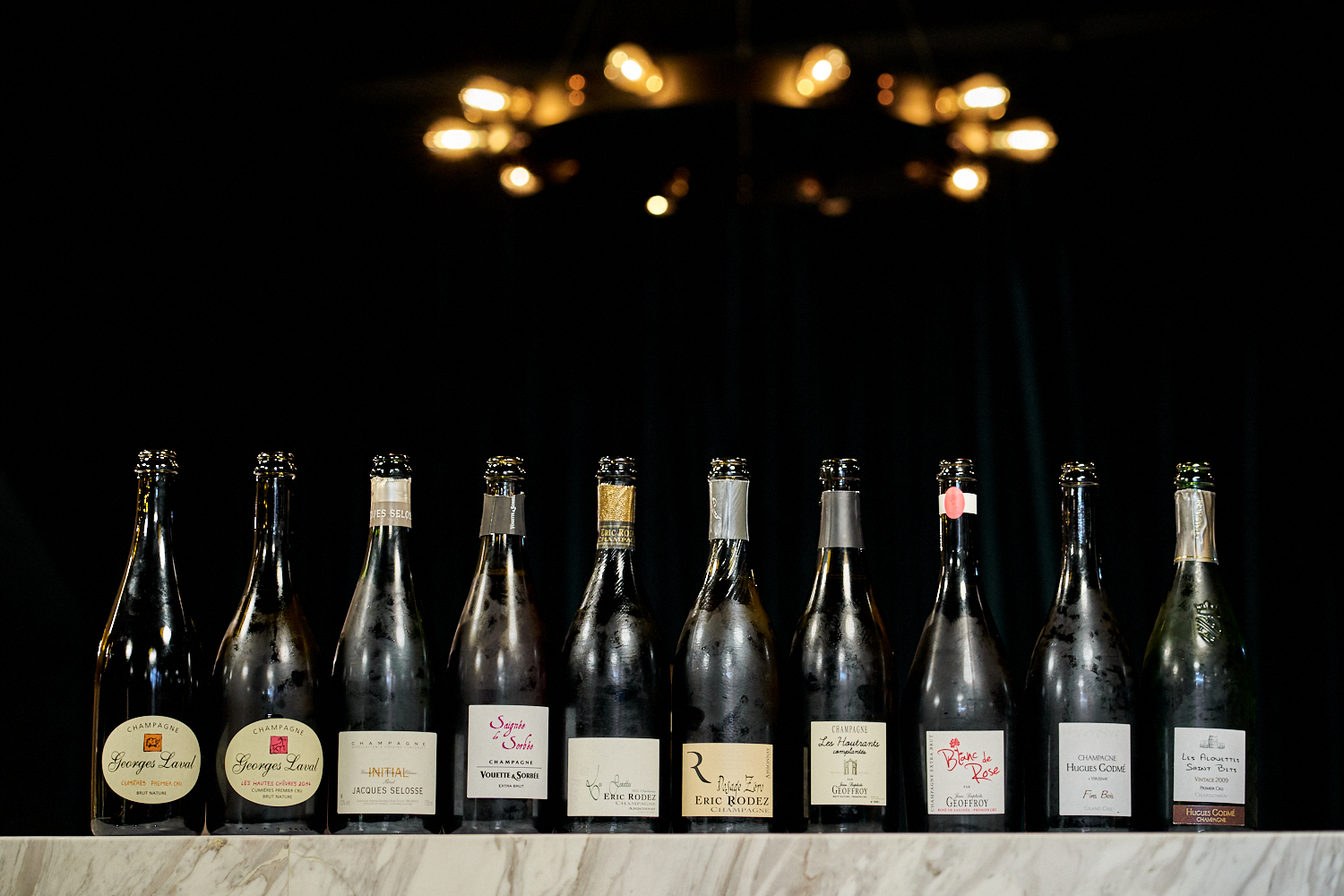
Vallée de la Marne
Disgorged September 2018 (1,002 bottles produced)
Bottled 2013(blend of harvests from 2008, 2009, 2010, 2011 and 2012)
Blend: Pinot Noir, Pinot Meunier, Chardonnay, Arbanne, Petit Meslier
This vineyard was planted in 2004 and is mid-slope above Cumières.
Jean-Baptiste Geoffroy, the fifth generation in charge at René Geoffroy describes himself as follows: ‘I am a winegrower.’ Tyson Stelzer, The Champagne Guide 2018-2019 pg. 154. He owns 11 hectares in Cumières, 1 hectare each in Damery and Hautvillers and 2 hectares in Fleury-la-Rivière. His goal is to produce wines that express the character of the vineyard. It’s not about expressing a grape variety for him. For ‘Les Houtrants complantés’ the grapes are co-planted and co-fermented. In terms of winemaking, he uses a traditional press, avoids malolactic fermentation and uses a low sulphur regimen. With ‘Les Houtrants complantés’, there is no use of oak and no fining or filtration.
This wine showed a sweet fruit character with aromas of brioche, almonds and white flowers and a creamier texture than the previous two Champagnes in the tasting. The round character and rich fruit aromas were surprising given the Champagne sees no time in oak. The body was medium plus. This Champagne received two votes for top two favourites of the night.
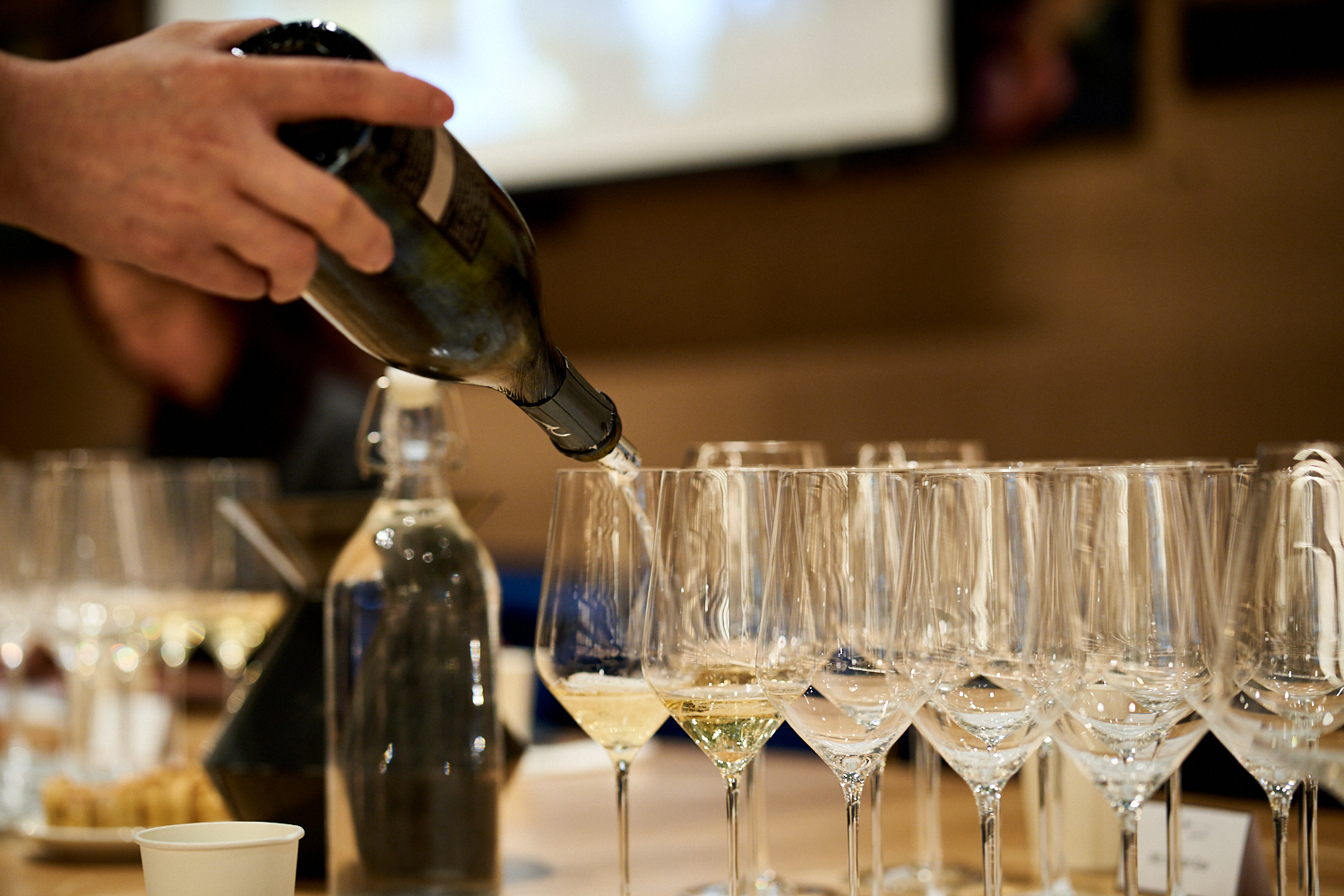
Montagne de Reims
Disgorged September 2018
4g/l dosage
Blend: 60% Pinot Noir, 40% Chardonnay
The focus for Hugues Godmé is the farming of his vineyards. ‘His aspiration is to use organics to encourage deep roots that draw minerality and salinity from the soil.’ Tyson Stelzer, The Champagne Guide 2018-2019 pg. 175. He has used organic farming practices since 2005 and received full certification in 2013. Godmé comprises 12 hectares with 84 parcels spanning five villages. Its base is in the grand cru of Verzenay. For the winemaking, Hugues uses indigenous yeast, moderate amounts of sulphur and the wines are mostly vinified and aged on their lees in oak barrels often for long periods of time. With global warming, Hugues is frequently blocking the malolactic fermentation in order to keep freshness and focus. pg. 175. With cuvée Fins Bois, the wine was finished with 30% malolactic fermentation, 80% fermentation in oak and four years on its lees.
This Champagne showed aromas of unripe peach, yellow plus and lime citrus. It was very chalky and precise with intense depth and concentration. The length was quite long. This Champagne received one vote for top two favourite wines of the night.

Vallée de la Marne
0 dosage
Disgorged 17 October 2018 (1,473 bottles produced)
The name of this wine translates to ‘The High Goats’, and the vineyard is located above the village of Cumières on clay-limestone soils. This Champagne comes from Pinot Meunier vines that were planted between 1930 and 1971 and provide low yields which produce intense aromatics and concentrated flavours on the palate.
For this tasting, all of the Champagnes were served in white Zalto glasses, but we provided a Bordeaux Zalto glass as well in case people wanted to try the Champagne in a larger glass. I find with grower Champagnes, and especially those that have a high percentage of Pinot Noir in the blend, that I prefer to drink them from a larger glass as the air helps them to open and reveals more aromas.
I poured my glass of Champagne into the Bordeaux Zalto glass. It was very floral with aromas of honeysuckle, peaches, nectarines and other stone fruits along with a lime citrus zestiness on the palate and dry finish. The wine was medium plus to full-bodied and much more aromatic than its counterpart Cumières. This Champagne received no votes for top two favourite wines of the night.
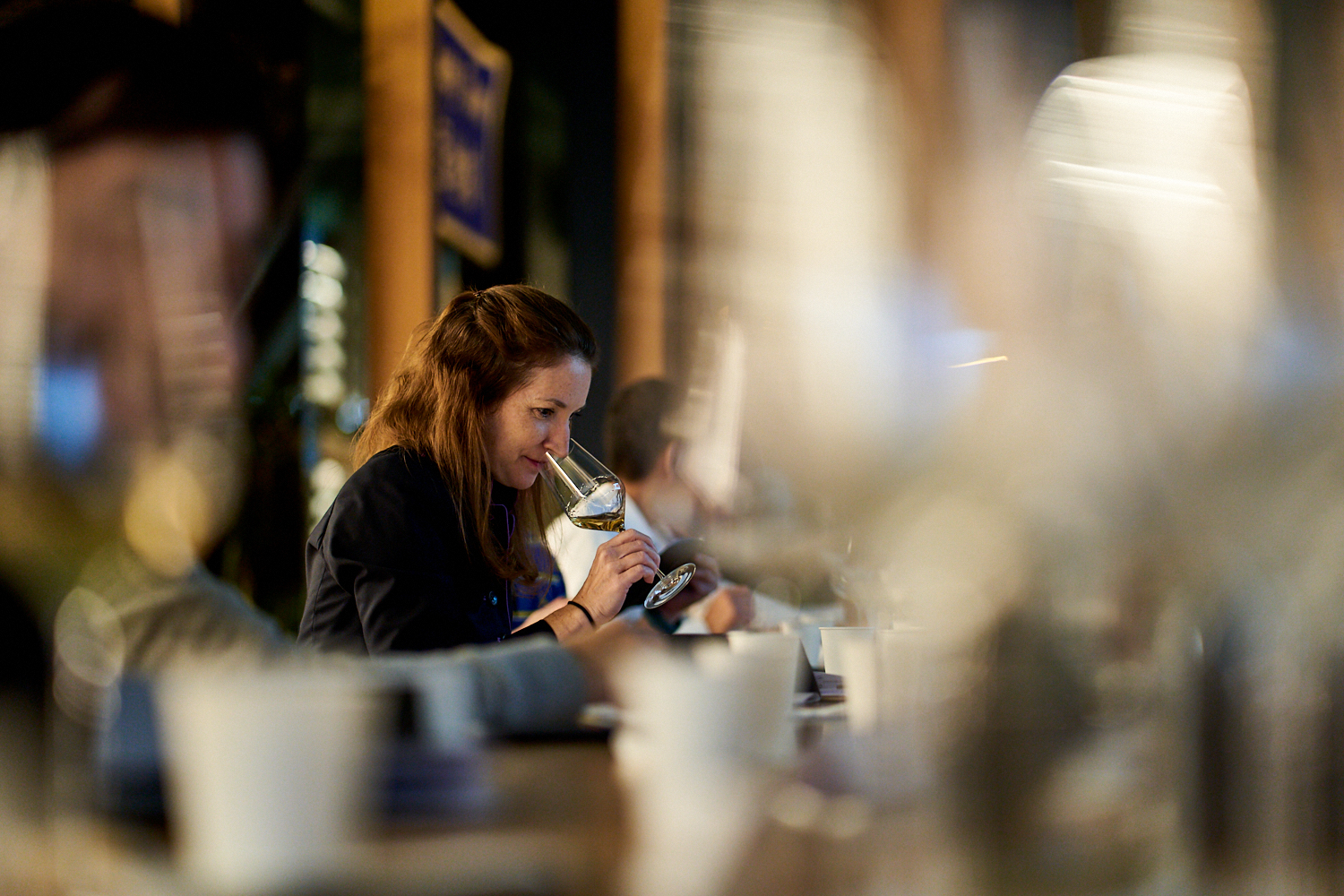
Montagne de Reims
1-3g/l dosage
100% vinified in wood
Disgorged July 2018
This Champagne is made from Chardonnay from vines with an average age of 41-years-old and the concentration and intensity from these older vines comes through in the wine. The 2012 “Les Genettes” was a step above the Zero Dosage that we tasted in the first flight. It’s elegant with aromas of crunchy peaches and other stone fruits and complex minerality. The wine is medium plus to full bodied and leaves a lingering finish. This Champagne received 6 votes including one of mine for top two favourite wines of the night and was the second favourite wine overall.

Montagne de Reims
2-3 g/l dosage
Disgorged May 2018
This Blanc de Blancs comes from Chardonnay vines planted on the upper slope areas in Villers-Marmery that are located at 180-210m in elevation. While the soil here is also made up of chalky subsoil, I didn’t find the chalky dominate character in this wine that I experienced when tasting the Fin Bois. Here in the ‘Alouettes St Bets’ the nose reveals white floral aromas and notes of ripe pear and lemon curd combined with lemony acidity and a creamy texture on the palate. I found underlying minerality creating balance in the wine and a medium plus to full bodied weight. This Champagne received three votes for top two favourite wines of the night.
Côte de Blancs
1-6 g/l dosage
Disgorged 13 November 2018
3 successive years (33,000 bottles produced each year)
From 3 Grands Crus: Avize, Cramant & Oger
The brand Jacques Selosse is likely the most famous name in Grower Champagne. Anselme Selosse took over from his father in 1980 and is primarily responsible for the prominence not only of their wines, but also of Grower Champagne in general. Many agree that he is a role model for the region of Champagne. Anselme is very passionate about nature and respecting it. He believes that ‘terroir encompasses the entire ecosystem.’ Tyson Stelzer, The Champagne Guide 2018-2019 pg. 191. Thus, he farms using biodynamic principles and does strict pruning to limit his yields. He has 47 parcels across 7.5 hectares.
For the winemaking, he follows a Burgundian style approach. Each of the 47 parcels is pressed separately, and he uses gravity flow to move the pressed juice around locations in his winery. Anselme ferments with indigenous yeast and in puncheons, foudres and Burgundy barrels in a range of sizes. pg. 192. He keeps solids in the fermenting juice because he believes this ‘provides nutrients and antioxidation protection for the wine’. pg. 192. Anselme does weekly stirring of the lees and allows malolactic fermentation to happen naturally or not at all. He also uses low dosage(less than 7g/l and usually less than 3 g/l), and he ages his Champagnes for a long period of time on their lees. But, perhaps the most radical part of his approach is that he uses minimal sulphur and only ever prior to fermentation. pg. 192. As a result, his Champagnes can have an oxidative style which sometimes goes too far. It’s a style that I find either people like or don’t like, so his wines can be divisive for Champagne lovers.
The Initial showed aromas of almond milk, almond skin, bruised apple and poached pear as well as honeysuckle floral notes. It was full-bodied with a long finish. For this crowd of tasters, they definitely liked the Selosse style as the wine received 7 votes for top two favourite wines of the night and was the overall favourite of the tasting.
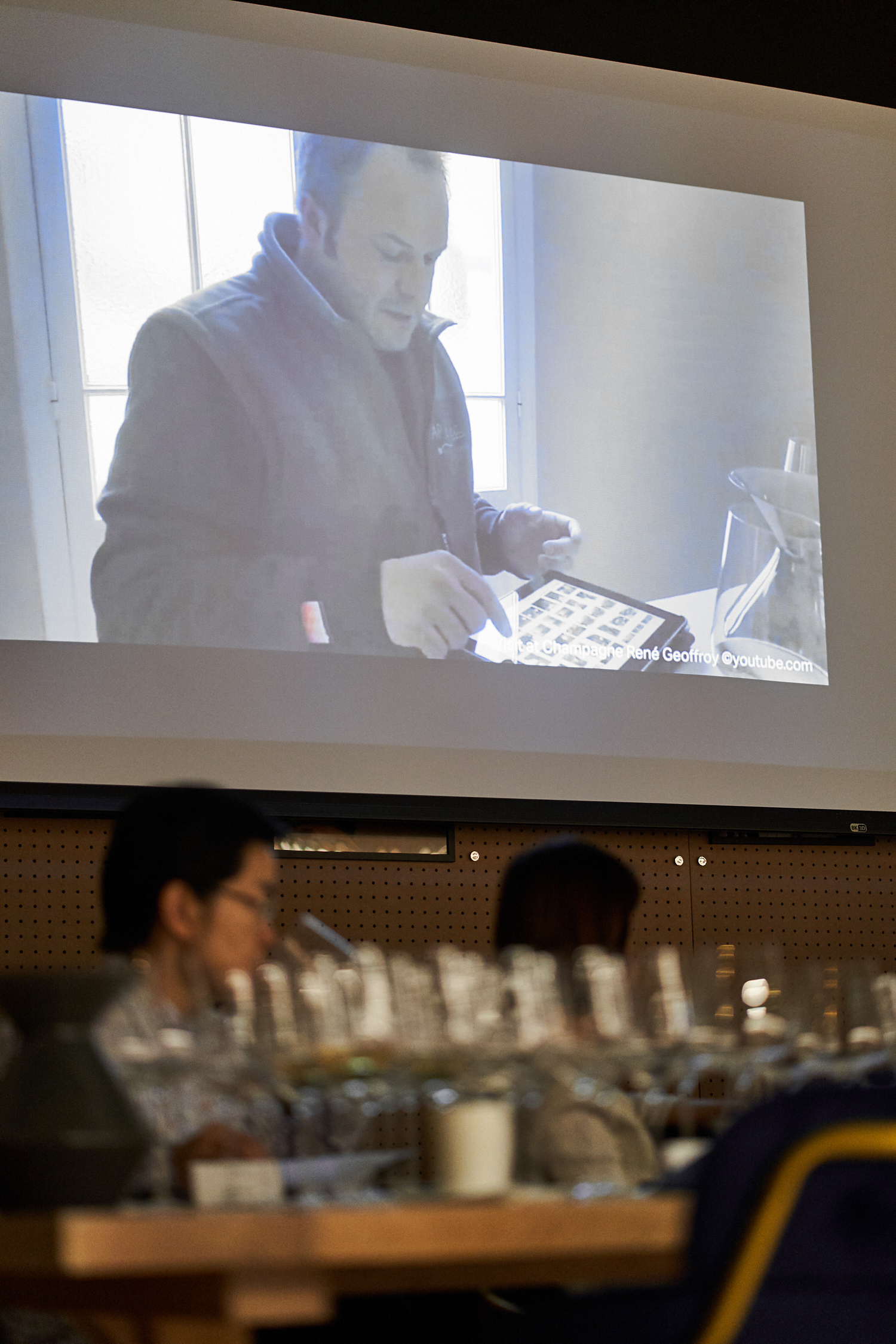
Vallée de la Marne
3g/l dosage
Disgorged March 2019
Blend: 50% Pinot Noir, 50% Chardonnay (co-macerated)
Grown in Cumières 1er Cru
Much like with René Geoffroy “Les Houtrants complantés”, here Jean-Baptiste co-macerates the Pinot Noir and Chardonnay from his 1er Cru vineyard in Cumières creating a Rosé Saignée in an open vat. This practice for making Rosé is unique in Champagne as most Rosé Champagnes containing Chardonnay will be made using the assemblage method whereby a tiny quantity (around 15%) of Pinot Noir or Pinot Meunier made as table wine is added to the white base wine.
This Rosé displayed aromas of violets, fresh wild strawberries, cranberries, red cherries and ruby red grapefruit and mandarin orange citrus notes. It was medium plus to full-bodied. This Rosé received two votes for top two favourite wines of the night.
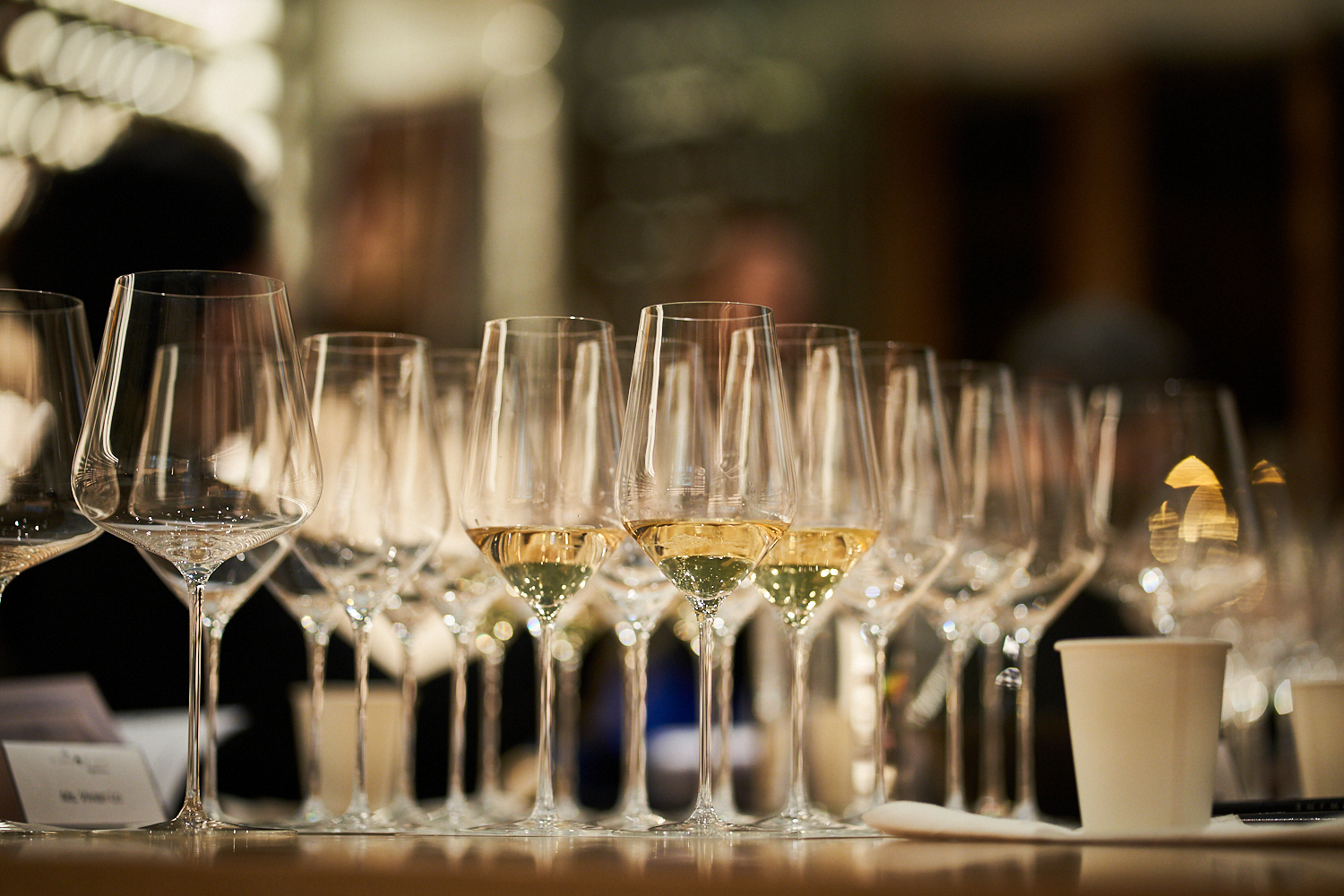
Côte des Bars in the Aube
0 dosage
Disgorged 5/12/2013
R11
100% Pinot Noir
Bertrand Gautherot’s first harvest was in 1986 and at that time he was still working in the cosmetics industry and selling his grapes to the large Champagne houses. He would go back to harvest the family’s parcels in Buxières-sur-Arce in the Aube each year until 1993 when he decided to return to the estate. When he saw the use of herbicides and the state of the vines, he was unhappy and decided to stop it. He was inspired by winemakers in Champagne, Chablis and Alsace who were using biodynamic farming practices and so decided to do the same. He received biodynamic certification in 1998.
Bertrand has 5 hectares, and he released his first Champagne in 2001. In his ‘I’ll Drink to That’ interview with host Levi Dalton (6 November 2016), Bertrand explained that he named his Champagne after his two lieux-dits (Vouette – located behind Bertrand’s house on a south-facing slope – and Sorbée located further up the slope from Vouette with a slight south-west exposure) instead of himself or a family name because he believes wine is about the vineyard. This concept of admiration of the vineyard and what it produces is shown not only in Bertrand’s vineyard practices but also in his winemaking.
His harvest lasts about three weeks because he sorts meticulously in the vineyard. He pours his juice into large 400 litre wooden vats and ferments with indigenous yeast, allowing the malolactic fermentation to happen naturally. For his Saignée de Sorbée Rosé, he follows the saignée method for producing rosé, and the wine undergoes a long carbonic maceration of approximately six days in open vats. In his interview with Levi Dalton, Bertrand explained that because he uses carbonic maceration to make his Rosé Champagne he wants thick skins; they must be solid and complete, so he doesn’t remove the stem. And you can’t make it all the time as you need strong, healthy grapes.
Bertrand prefers shorter ageing periods with his Champagne as he wants to conserve its contact with oxygen and doesn’t work with sulphur dioxide. He also disgorges quickly to prevent much contact with oxygen. There is no dosage in this Champagne. Because he doesn’t follow the ageing requirements for vintage Champagne, although his Champagne is from a specific year, he can’t state that on the label, so instead he writes, “R” and lists two numbers on the back label to indicate the year.
As Levi described in his interview with Bertrand, when you taste this Rosé Champagne, there is a vinous quality that stands out. It’s a serious wine with a medium-hued garnet colour that reminds one more of Pinot Noir than our general idea of Rosé Champagne. It’s intensely aromatic with flavours of spice, ginger, cinnamon, cardamom, red and dark cherry fruit, fresh and dried, earthy mushroom notes as well as old leather and forest floor. This Champagne is full-bodied with a long length and depth on the palate. It received 3 votes for top two favourite wines of the night and was one of my favourites from the tasting.

Thank you to everyone who joined me on 30 October for this little journey of discovery into the topic of Grower Champagne. It’s one I’m still learning about, but I hope we all gained a bit more understanding and were inspired to try more. Happy Thanksgiving! And consider popping a bottle of Grower Champagne with that turkey. I’ll be drinking bubbles with mine.
